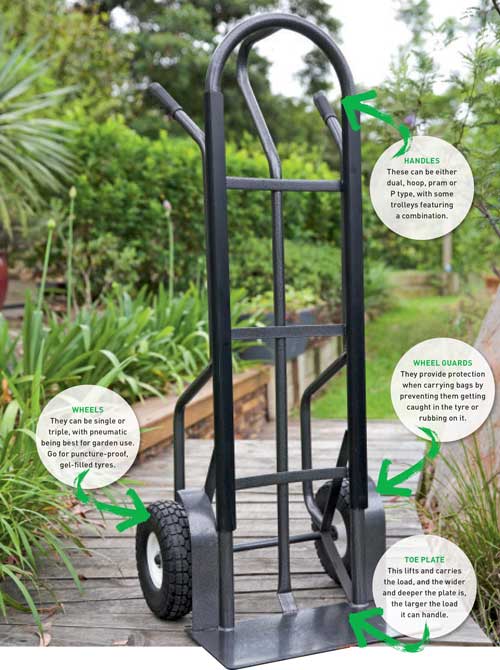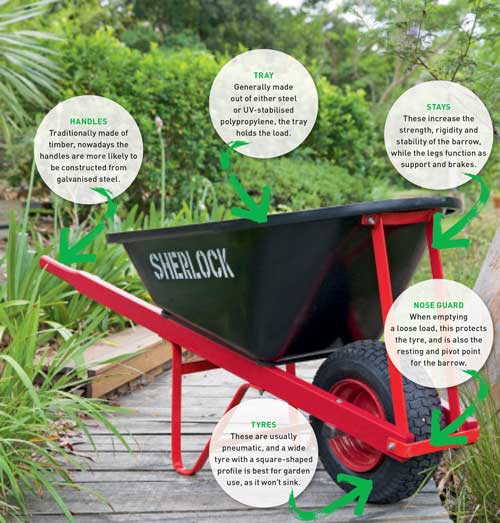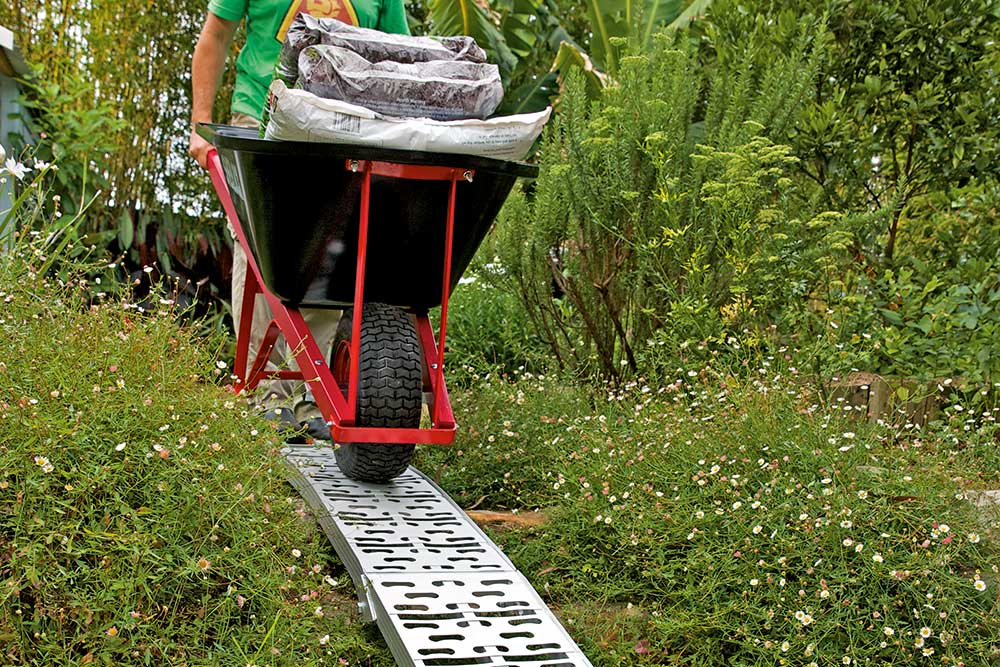
When it comes to moving stuff, whether it’s a pile of soil or mulch, bags of compost or a large pot, there’s the hard way to do it and the easy way.
Attempting to carry a large object in your arms or making multiple trips is the hard way. Using a wheelbarrow or hand trolley and letting the magic of leverage make light and safe work of heavy tasks is the easy way.
The wheelbarrow is a masterpiece of simple ingenuity. It was first widely used in China almost 2000 years ago, and the design has changed very little in all this time.
Wheelbarrows are also more than just a vessel for carrying a load. The tray is ideal to use for mixing wet or dry materials, such as a batch of concrete or a blend of your own compost or soil mix.
The hand trolley, or hand truck, is for single-purpose use and is a relative newcomer, taking the form we know during the Industrial Revolution.
So when do you grab the hand trolley over the wheelbarrow, or vice versa? While there are times when both will get the job done safely and efficiently, like moving bagged items, each has specific tasks that it does best.
Wheelbarrows can transport loose loads, wet or dry, such as soil, sand, mulch, concrete, rocks and bricks.
Hand trolleys are designed for large or heavy single-item loads like a statue, large pot or garden bench.
Hand trolley safety
The key to using a hand trolley safely is to make sure you never exceed the load rating and check that the area you’ll be travelling through is clear of obstructions.
SLIDE the toe plate as far under the load as possible.
BALANCE the load evenly on the toe plate so it is not weighted to one side.
AVOID top-heavy loads or where the centre of gravity is above the handles.
STRAP tall loads to the trolley.
TRAVEL forwards unless you are going up steps or a ramp.
KEEP both hands on the handles at all times when moving a load.
LOAD your trolley in a way that doesn’t restrict your vision.

The key to using a hand trolley safely is to make sure you never exceed the load rating
Wheelbarrow safety
Before filling a wheelbarrow, make sure the tyre is fully inflated and don’t use one that’s missing any bolts or has bent legs, handles or stays.
For timber-handled barrows, ensure the handles are not split or damaged.
ENSURE the area you’ll be wheeling through is clear of obstructions such as rocks or large sticks.
AVOID overloading a wheelbarrow by weight or volume.
LOAD the wheelbarrow tray so the weight is over the wheel and biased towards the front of the tray, but evenly distributed to the left and right.
KEEP the load low and never try to move a wheelbarrow that you can’t see over or around, and don’t carry a load that protrudes from the sides.
LIFT the wheelbarrow using your legs, not your back.
WALK forwards with the barrow in front of you, don’t drag it backwards.
USE extra care with unstable loads such as concrete or large rubble, as they can shift position and very easily overbalance the barrow.
LET a barrow go if it starts tipping over, don’t try to pull it back. Leverage allows you to lift a heavy load, but you won’t be able to support it once it tips and you’ve lost the advantage of that leverage.
EMPTY loads slowly and maintain a firm grip as you do so.

Before filling a wheelbarrow, make sure the tyre is fully inflated
Using a ramp
Negotiating steps with a wheelbarrow can be daunting for even the most experienced barrow-hand.
Temporary ramps are the safest way to overcome the problem, but setting them up properly can take time. Look for a single folding ramp with a high load capacity but a small weight. This will make it easy to set up a ramp in seconds so you can easily
With a load capacity of up to 175kg, yet weighing only 8kg, it can be set up in seconds to give you a sturdy 2.2m long wheelbarrow or access ramp.

Set up a folding ramp to safely transport loads up and down steps

